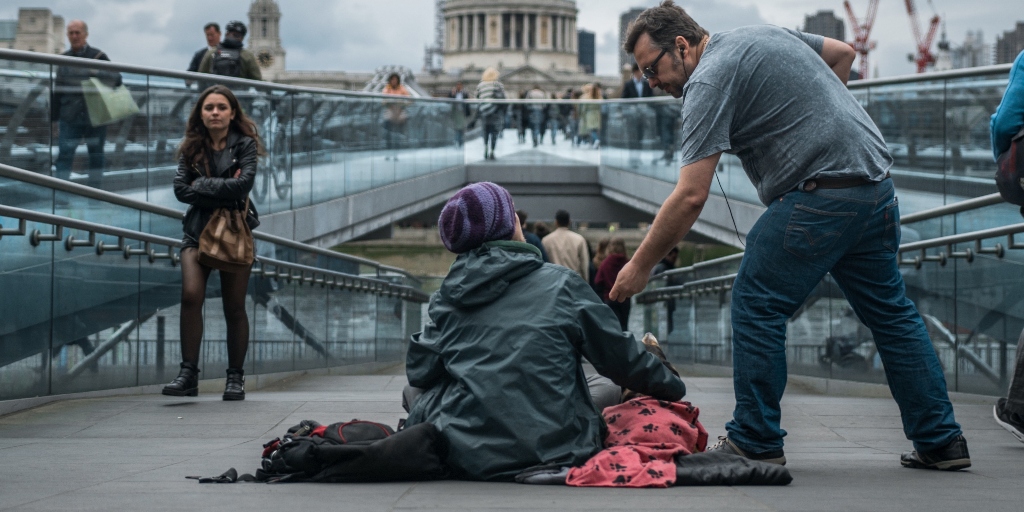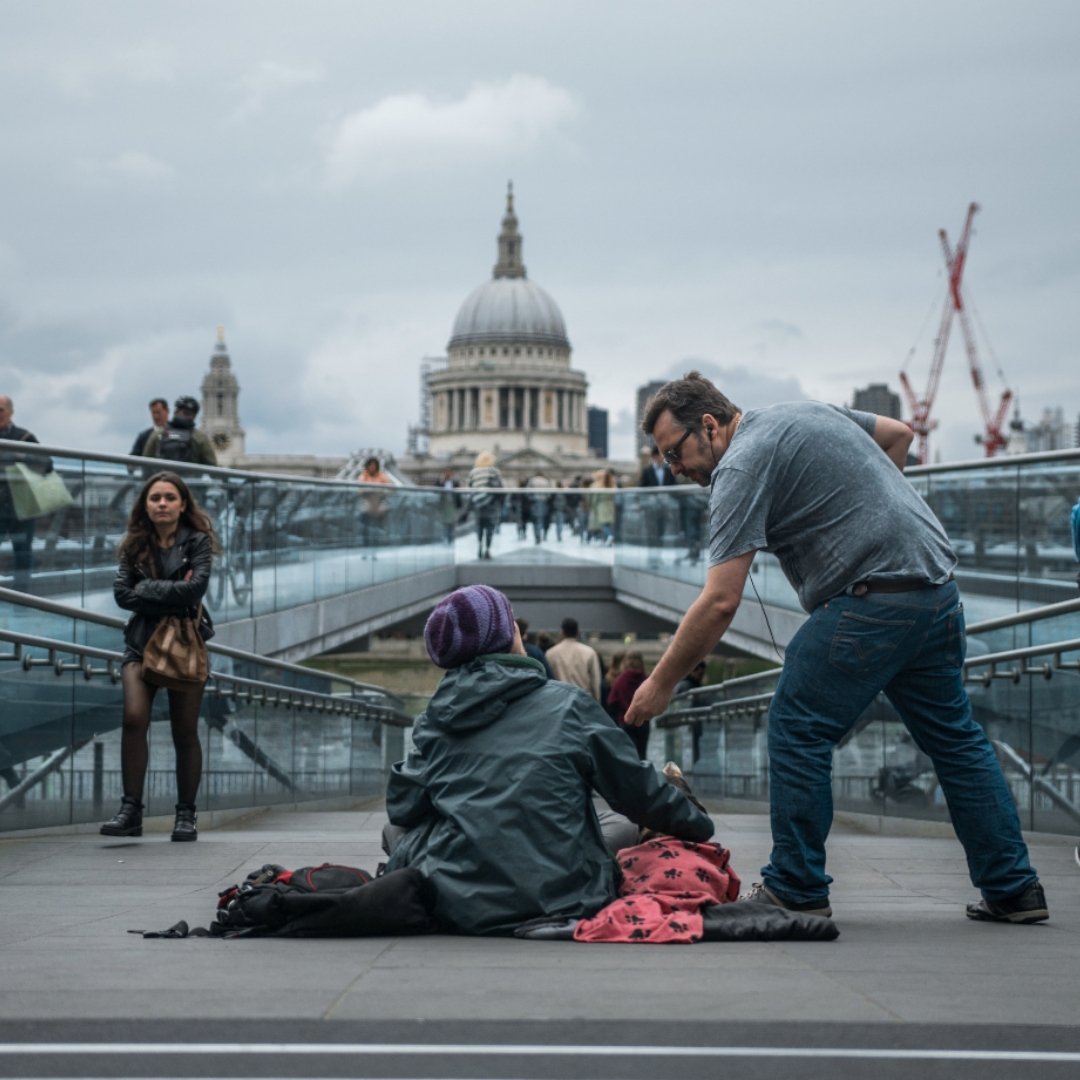
Susan Ciancio explains how parents can teach their children to perform the Corporal Works of Mercy.
In Matthew 25:34-36, Christ teaches:
“The king will say to those on his right, ‘Come, you who are blessed by my Father. Inherit the kingdom prepared for you from the foundation of the world. For I was hungry and you gave me food, I was thirsty and you gave me drink, a stranger and you welcomed me, naked and you clothed me, ill and you cared for me, in prison and you visited me.’”
When His followers asked when they did these things for Him, Christ responded: “Whatever you did for one of these least brothers of mine, you did for me.”
It’s a beautiful image, isn’t it? These followers of Christ simply did what came naturally to them. They took care of their brothers and sisters.
Today, we call these charitable acts the Corporal Works of Mercy. The word corporal means “of the body,” so the Corporal Works of Mercy are physical acts of kindness that we do for others by serving their bodily needs. We are all called to feed the hungry, give drink to the thirsty, clothe the naked, shelter the homeless, visit the sick and imprisoned, bury the dead, and give alms to the poor.

We understand our duties to our brothers and sisters in Christ, but how do we teach our children to see the connection between these Corporal Works of Mercy and living the pro-life message?
We serve as role models. And we give them role models. One of the greatest role models is St. Teresa of Calcutta. Through her actions, St. Teresa taught love, kindness, compassion, and selflessness. This was her calling.
We all have a special calling in life. God gives each of us unique talents so we can follow that calling. It’s up to us to learn how to hone these talents. And it’s up to us as parents to teach our children how to hone their talents.
As we look at Mother Teresa’s life and work to incorporate her examples into our lives and the lives of our children, we learn how to better serve the people within our own communities. Thus, while Mother Teresa fed the hungry, gave drink to the thirsty, and gave alms to the poor in the streets of Calcutta, we can teach that we have hungry people in our own communities. We serve them by donating to food pantries, buying a meal for a homeless person, or volunteering to serve a meal at a shelter. We must also teach our children that, in many places throughout the world, there is no clean water available to drink. Our children can learn to save water by taking shorter baths or showers and not letting the water run while they brush their teeth. Further, giving alms to the poor is something everyone can do. When your children receive monetary gifts, encourage them to set aside a portion to put in the poor box at church, to donate to a shelter, or to save up to buy something for someone who needs it.
Mother Teresa helped shelter the homeless by creating safe houses for them. We may not be able to do something as heroic as that, but we can still teach our children to be heroes. We can donate clothing to homeless shelters. We can create fundraisers to raise money for these shelters or for shelters that help expectant mothers and their babies. We can adopt a family at back-to-school time or at Christmas and shop for their needs. Giving shelter to people incorporates so much!
Mother Teresa spent her days caring for the sick. She took people off the streets and bandaged their wounds. She held their hands during their final moments on earth. She prayed daily for them. While we may not be able to do all of these things, we can certainly pray. And we can look around at the needs of the people in our community. Do you have a children’s hospital in your city? Make cards for them. Send stuffed animals in a care package. Do you have a sick friend who needs help getting groceries? Take your children shopping with you and explain that you’re helping someone who is sick.
Visiting actual prisoners in a jail is a special ministry that, for obvious reasons, is not appropriate for children. But you can explain to your children that lots of people — especially the elderly — feel imprisoned. Maybe it’s in their own home. Maybe it’s in a nursing home. Devise a plan together to help these people feel less lonely and isolated by visiting them.
Burying the dead is a Corporal Work of Mercy that we must do for our brothers and sisters in Christ, but it’s not something kids can do. Yet, they are not helpless when it comes to this work of mercy. Explain the importance of praying for those who have passed away and of praying for their families.
Kids can perform the Corporal Works of Mercy! And we must teach them to do these things out of love. As St. Teresa saw the face of Christ in everyone she helped, so much we teach our children. For as Christ said, “Whatever you did for one of these least brothers of mine, you did for me.”

Copyright 2021 Susan Ciancio
Images: Tom Parsons (2017), Unsplash; Annie Spratt (2019), Unsplash
About the Author

Susan Ciancio
Susan Ciancio has a BA in psychology and a BA in sociology from the University of Notre Dame and a master’s in liberal studies from Indiana University. Since 2003, she has worked as a professional editor and writer. She is executive editor for the Culture of Life Studies Program and editor of ALL's Celebrate Life Magazine.


.png?width=1806&height=731&name=CatholicMom_hcfm_logo1_pos_871c_2728c%20(002).png)
Comments